I hope everyone is doing well.
I am trying to develop a Bokeh interaction whereby selecting a part of a scatter plot will update a table.
I am using a lot of the sample code from the Bokeh documentation. My workplace is running an older version of Bokeh (0.12.5) so I had to change the last line in the Custom JS (from s2.change.emit() to s2.trigger('change). I then added in a few lines to create a DataTable.
I naively thought that since sourcing 's1' in the Datatable works, sourcing 's2' will allow me to link the table to the lasso select. I even tried adding in an extra trigger to the table widget in the JS callback.
Does anyone know how to create a table from a lasso select in a graph?
Code
Thanks in advance.
from random import random
from bokeh.layouts import row
from bokeh.models import CustomJS, ColumnDataSource
from bokeh.plotting import figure, output_file, show
from bokeh.models.widgets import DataTable, DateFormatter, TableColumn
output_file("callback.html")
x = [random() for x in range(500)]
y = [random() for y in range(500)]
s1 = ColumnDataSource(data=dict(x=x, y=y))
p1 = figure(plot_width=400, plot_height=400, tools="lasso_select", title="Select Here")
p1.circle('x', 'y', source=s1, alpha=0.6)
s2 = ColumnDataSource(data=dict(x=[], y=[]))
p2 = figure(plot_width=400, plot_height=400, x_range=(0, 1), y_range=(0, 1),
tools="", title="Watch Here")
p2.circle('x', 'y', source=s2, alpha=0.6)
###New code##
columns = [TableColumn(field ="x", title = "X axis"),
TableColumn(field ="y", title = "Y axis")]
table = DataTable(source =s2, columns = columns, width =400, height = 280)
##Added in table.trigger('change') hoping this would link to the lasso select.
s1.callback = CustomJS(args=dict(s2=s2), code="""
var inds = cb_obj.selected['1d'].indices;
var d1 = cb_obj.data;
var d2 = s2.data;
d2['x'] = []
d2['y'] = []
for (i = 0; i < inds.length; i++) {
d2['x'].push(d1['x'][inds[i]])
d2['y'].push(d1['y'][inds[i]])
}
s2.trigger('change');
table.trigger('change');
""")
##having 'table' in the layout, stops the callback from working, deleting table from the layout makes it work.
layout = row(p1, p2, table)
show(layout)
